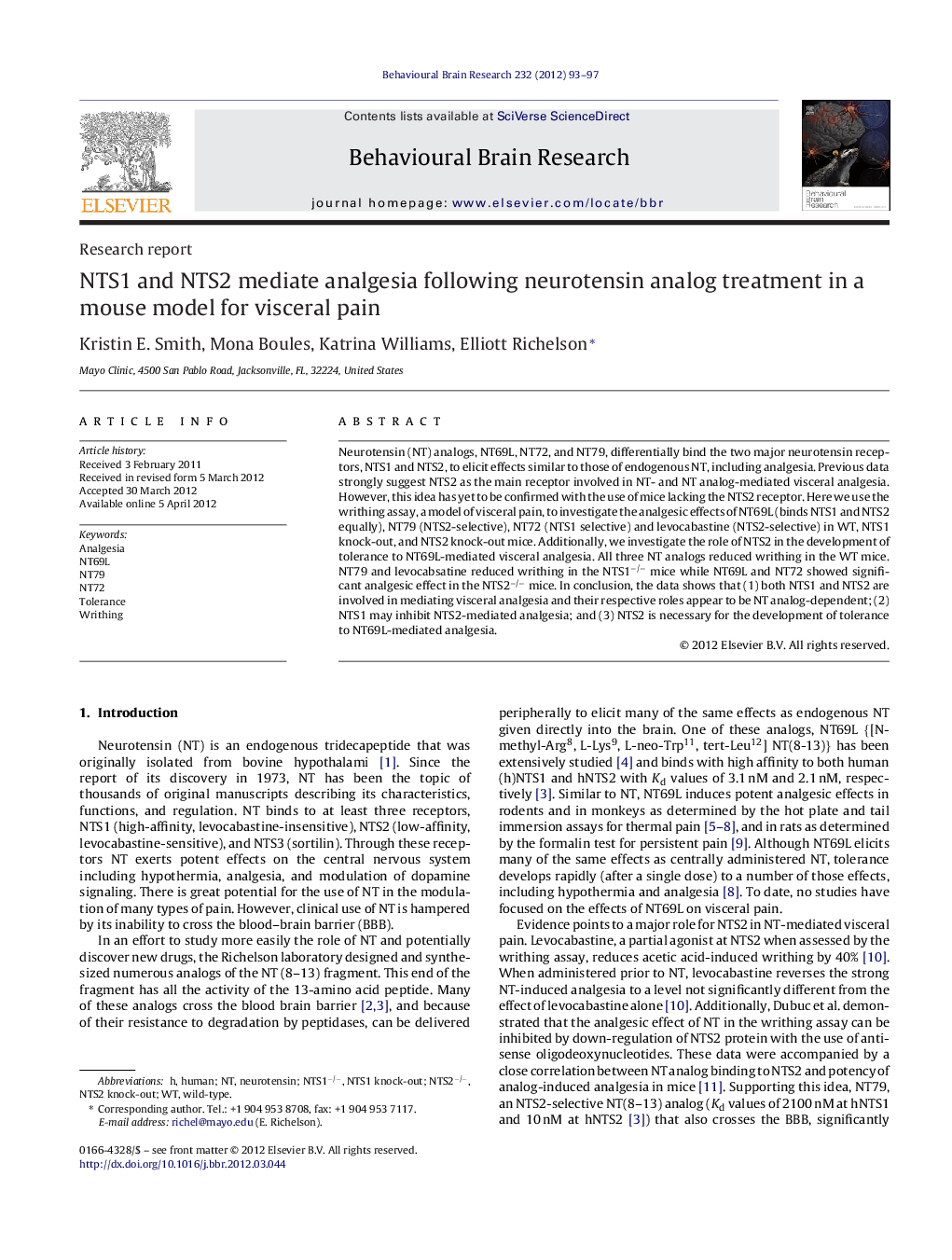| Article ID | Journal | Published Year | Pages | File Type |
|---|---|---|---|---|
| 4313101 | Behavioural Brain Research | 2012 | 5 Pages |
Neurotensin (NT) analogs, NT69L, NT72, and NT79, differentially bind the two major neurotensin receptors, NTS1 and NTS2, to elicit effects similar to those of endogenous NT, including analgesia. Previous data strongly suggest NTS2 as the main receptor involved in NT- and NT analog-mediated visceral analgesia. However, this idea has yet to be confirmed with the use of mice lacking the NTS2 receptor. Here we use the writhing assay, a model of visceral pain, to investigate the analgesic effects of NT69L (binds NTS1 and NTS2 equally), NT79 (NTS2-selective), NT72 (NTS1 selective) and levocabastine (NTS2-selective) in WT, NTS1 knock-out, and NTS2 knock-out mice. Additionally, we investigate the role of NTS2 in the development of tolerance to NT69L-mediated visceral analgesia. All three NT analogs reduced writhing in the WT mice. NT79 and levocabsatine reduced writhing in the NTS1−/− mice while NT69L and NT72 showed significant analgesic effect in the NTS2−/− mice. In conclusion, the data shows that (1) both NTS1 and NTS2 are involved in mediating visceral analgesia and their respective roles appear to be NT analog-dependent; (2) NTS1 may inhibit NTS2-mediated analgesia; and (3) NTS2 is necessary for the development of tolerance to NT69L-mediated analgesia.
► Both NTS1 and NTS2 are involved in mediating visceral analgesia. ► The role(s) of each NT receptor appear to be NT analog-dependent. ► NTS2 is necessary tolerance to NT69L-mediated visceral analgesia. ► NTS1 may inhibit NTS2-mediated analgesia.
